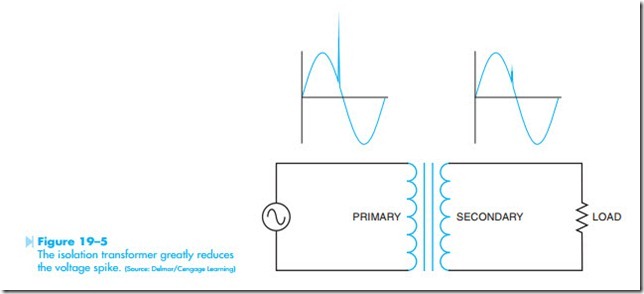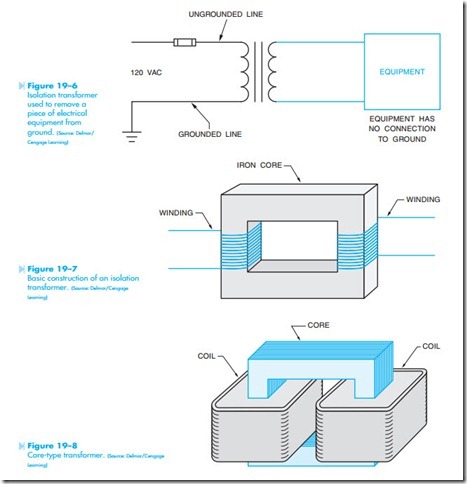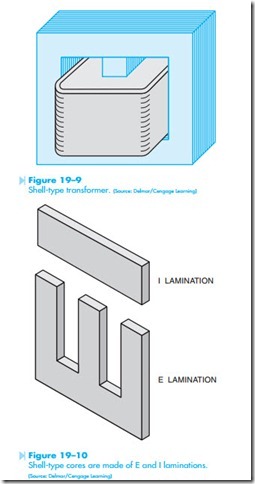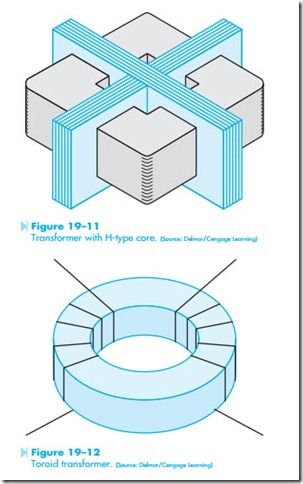TRANSFORMER CORE TYPES
There are several different types of cores used in the construction of transformers. Most cores are made from thin steel punchings laminated together to form a solid metal core. Laminated cores are preferred because a thin layer of oxide forms on the surface of each lamination, which acts as an insulator to reduce the formation of eddy currents inside the core material. The amount of core material needed for a particular transformer is determined by the power rating of the transformer. The amount of core material must be sufficient to prevent saturation at full load. The type and shape of the core generally determines the amount of magnetic coupling between the windings and to some extent the efficiency of the transformer.
The transformer illustrated in Figure 19–8 is known as a core transformer. The windings are placed around each end of the core material. The metal core pro- vides a good magnetic path between the two windings.
The shell transformer is constructed in a similar manner as the core type, except that the shell type has a metal core piece through the middle of the window, Figure 19–9. The primary and secondary windings are wound around the center core piece with the low voltage winding being closest to the metal core. This arrangement permits the trans- former to be surrounded by the core, which provides
excellent magnetic coupling. When the trans- former is in operation, all the magnetic flux must pass through the center core piece. It then divides through the two outer core pieces. Shell type cores are sometimes referred to as E-I cores because the steel punchings used to construct the core are in the shape of an E and an I, Figure 19–10.
The H-type core shown in Figure 19–11 is similar to the shell type core in that it has an iron core through its center around which the primary and secondary windings are wound. The H core, how- ever, surrounds the windings on four sides instead of two. This extra metal helps reduce stray leakage flux and improve the efficiency of the transformer. The H-type core is often found on high voltage distribution transformers.
The tape wound or toroid core, Figure 19–12, is constructed by tightly winding one long continuous silicon steel tape into a spiral. The tape may or may not be housed in a plastic container depending on the application. This type core does not require steel punchings that are then laminated together. Because the core is one continuous length of metal, flux leakage is kept to a minimum. The tape wound core is one of the most efficient core designs available.
Related posts:
Incoming search terms:
- core type transformer
- IF furnace transformer mail
- Mutual inductor curing furnace mail
- transformer core types
- types of transformer cores
- types cores used in transformer construction
- two types of the core
- two types of core
- transformer core calculation
- transformer core
- The coils of transformer wound on the central core
- list the different types of cores used in transformer construction
- Laminated core transformer mail
- hh 06003-0001a triodial core type
- types of transformer used in hvac



